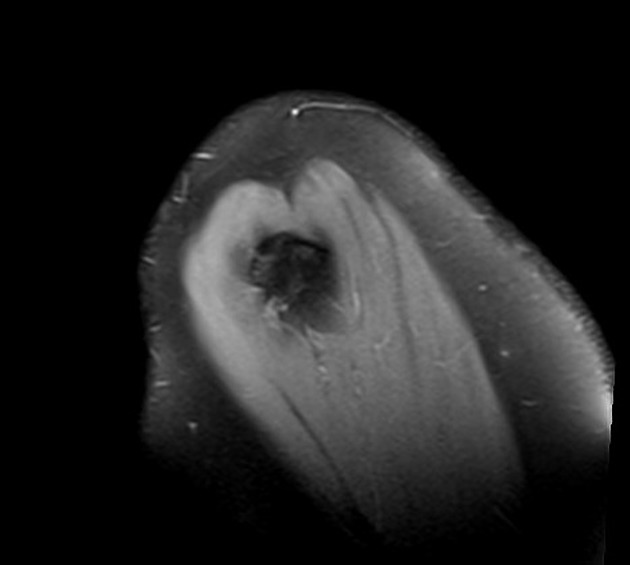Long head of biceps brachii tendon pathology can be examined both with ultrasound and/or MRI. Both instability and tears can result in pain and decreased function.
On this page:
Clinical presentation
Clinical tests
Pathology
Long head of biceps can be affected by numerous pathological processes 3:
tendinosis
tenosynovitis
tendon sheath effusion - long head of biceps tendon sheath effusion
tears/rupture
instability/subluxation/dislocation - long head of biceps tendon dislocation
intra-articular ganglion cyst originating from the intertubercular groove
Radiographic features
Ultrasound
The findings on ultrasound indicating tendinopathy are the same as with other tendons:
long head of biceps tendon sheath effusion: non-specific as it communicates with the glenohumeral joint
thickening or thinning of the tendon
irregularity of the tendon borders
absence of the normal fibrillary appearance (note: beware anisotropy)





 Unable to process the form. Check for errors and try again.
Unable to process the form. Check for errors and try again.